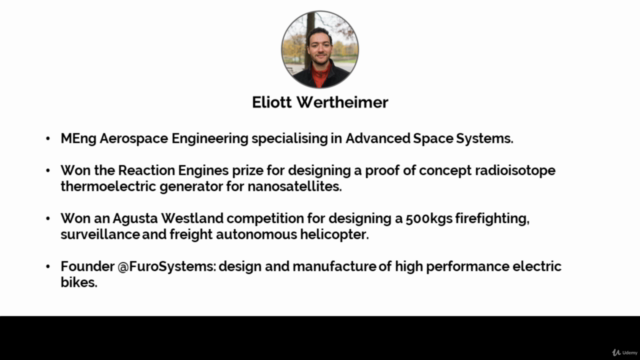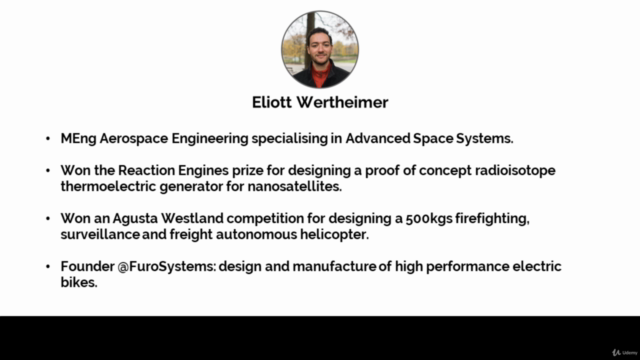Model a Car and Design a PID Controller in MATLAB/SIMULINK

Why take this course?
🚗 Model a Car and Design a PID Controller in MATLAB/SIMULINK
🚀 Headline: Model and simulate an electric car (Tesla Model S) in MATLAB & SIMULINK and design your own PID speed controller.
Course Description:
Dive into the world of control engineering with our unique online course that takes you from the core mathematical modeling of engineering systems to the practical implementation of models in MATLAB/SIMULINK, and the intricate design of a PID (Proportional-Integral-Derivative) controller. 📚✨
Control systems are integral to a myriad of applications in our daily lives – from the cars we drive to the advanced technologies that explore beyond our atmosphere. As these systems become more sophisticated, understanding control engineering becomes essential for designing precise and reliable systems.
What You Will Learn:
✅ Physics of Electric Cars: Gain insights into the physics governing the operation of an electric car like the Tesla Model S, and how it applies to other electric vehicles. 🔋
✅ Mathematical Modeling: Establish the mathematical model for an electric DC motor, understand the dynamics of a car, and learn how to apply these models in real-world scenarios.
✅ MATLAB/SIMULINK Implementation: Translate your engineering concepts into SIMULINK using blocks, transfer functions, and MATLAB functions, creating a dynamic model of your system.
✅ Real-World Testing and Fitting: Validate and refine your model against real-life performance data to ensure accuracy and reliability.
✅ PID Controller Design: Learn to implement, test, and tune a PID controller tailored to your requirements, focusing on controlling the speed of an electric car (like the Tesla Model S) for applications such as cruise control.
Your Instructor: Eliott Wertheim
Eliott is not just an instructor; he's a guide who will delve into each concept and technique with clarity and precision. He will cover all fundamentals from the ground up, ensuring that no matter your starting point – beginner, intermediate, or advanced – you will grasp the complexities of engineering systems, MATLAB/SIMULINK usage, and PID control design.
Why This Course?
This comprehensive course is designed for a wide array of learners, from students and engineers to enthusiasts and professionals across various fields such as robotics, drones, computer science, business, sports, and beyond. Whether you're interested in the physics behind electric cars or controlling them with a PID controller in SIMULINK, this course will equip you with the necessary skills and knowledge.
Support Along the Journey:
You won't be on this journey alone! If you encounter any questions or challenges during the course, Eliott is committed to providing support. He aims to answer all inquiries within 24 hours to ensure a smooth learning experience.
Join Us Today!
If this course piques your interest for personal enrichment, career advancement, or academic exploration, don't hesitate to join us. With a focus on practical application and hands-on learning, you'll be amazed at the depth of knowledge and skills you acquire by the end of this journey. 🌟
Click "Enroll Now" to embark on an exciting learning adventure with the Model a Car and Design a PID Controller in MATLAB/SIMULINK course. Take the first step towards mastering control systems engineering today!
Course Gallery




Loading charts...
Comidoc Review
Our Verdict
This course is best suited for those looking for foundational knowledge on system modeling and PID controller implementation in MATLAB Simulink. However, the absence of advanced topics, Tesla Model S practical implementation, and adherence to industry standards may deter more experienced engineers.
What We Liked
- Provides a solid understanding of modeling systems in MATLAB Simulink, which can be applied beyond electrical systems.
- Includes a detailed overview of deriving mathematical equations for an electric DC motor and car movements.
- Offers insights into implementing transfer functions and common Simulink blocks.
- Demonstrates open loop and closed loop modeling using a basic PID controller.
Potential Drawbacks
- Lacks practical implementation of an actual Tesla Model S battery or three-phase AC electrical machine.
- Does not discuss advanced control strategies such as MTPA, cascading PI controllers, or coordinate transformation.
- Design of PID controller uses a trial-and-error approach rather than following systematic calculations or optimization methods.
- Fails to provide depth in Simulink implementation that meets industry standards, such as manipulating variables with an M-script.